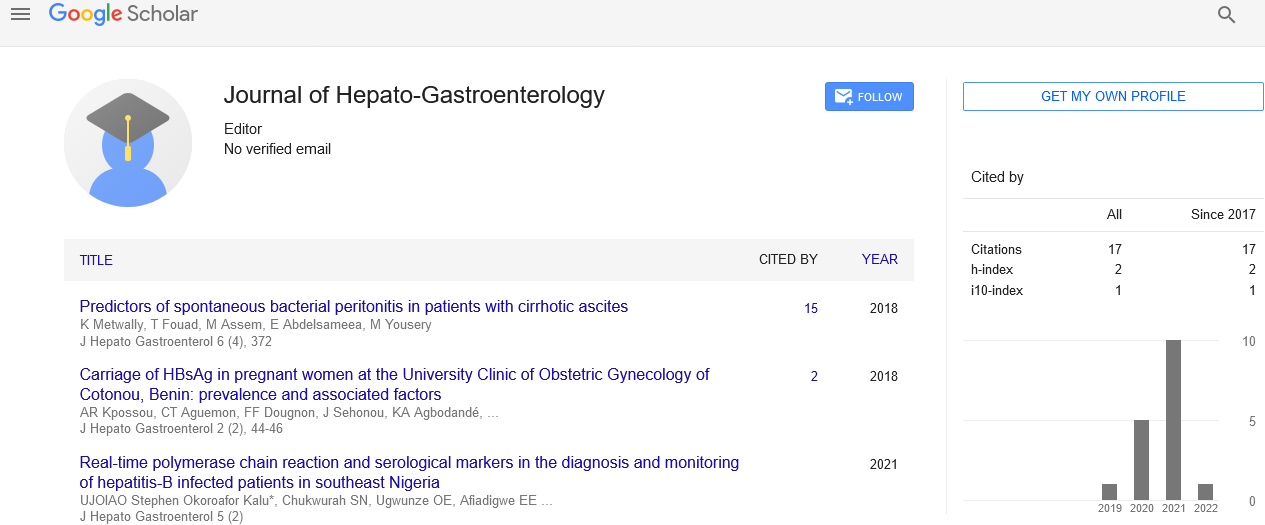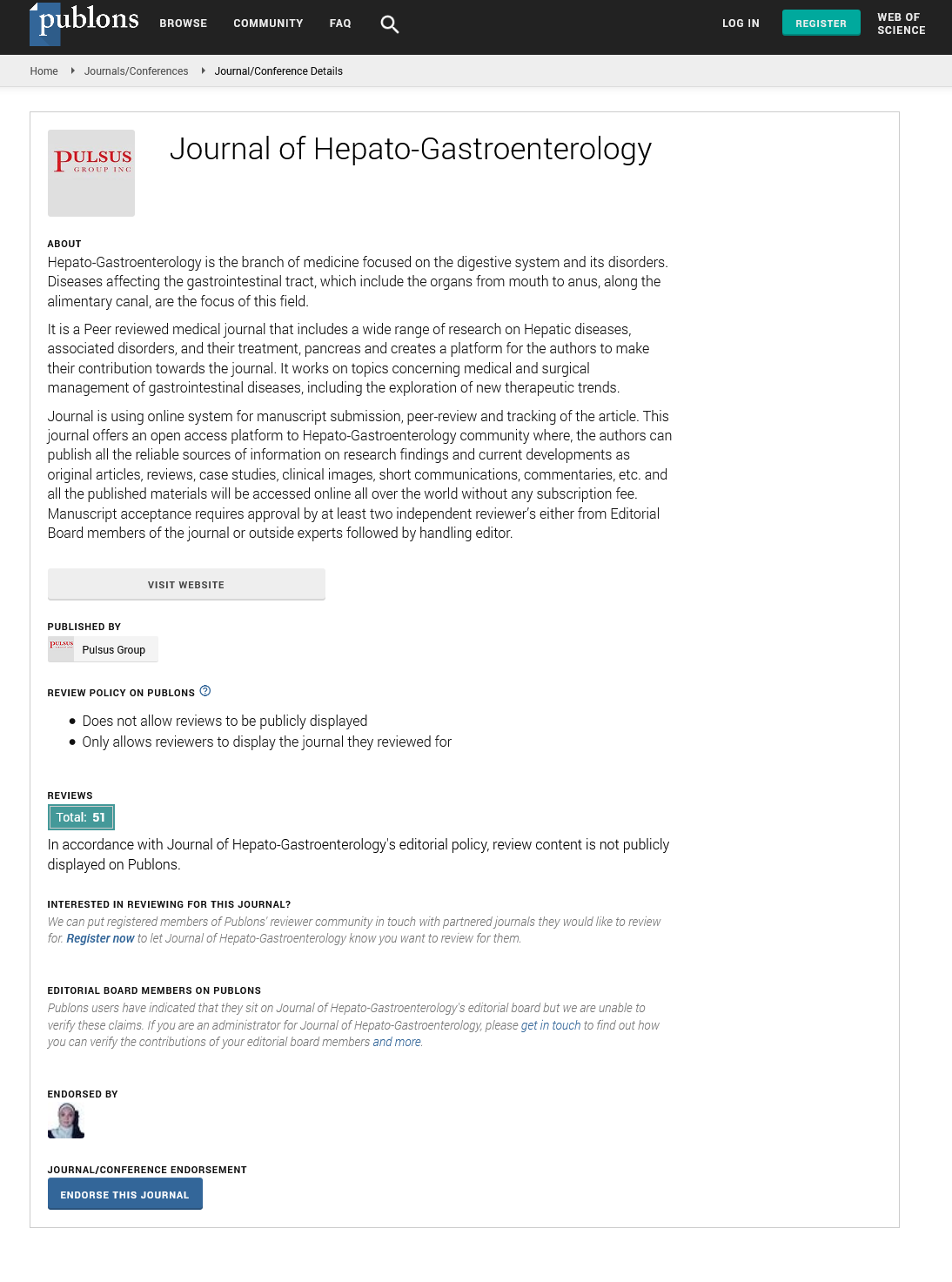Short opinion on Laparoscopy for Carcinoma Gall Bladder
Received: 07-Mar-2022, Manuscript No. PULHG-22-4430; Editor assigned: 12-Mar-2022, Pre QC No. PULHG-22-4430 (PQ); Reviewed: 20-Mar-2022 QC No. PULHG-22-4430; Revised: 23-Mar-2022, Manuscript No. PULHG-22-4430 (R); Published: 10-Apr-2022, DOI: 10.37532/pulhg.22.6.2.1-2
This open-access article is distributed under the terms of the Creative Commons Attribution Non-Commercial License (CC BY-NC) (http://creativecommons.org/licenses/by-nc/4.0/), which permits reuse, distribution and reproduction of the article, provided that the original work is properly cited and the reuse is restricted to noncommercial purposes. For commercial reuse, contact reprints@pulsus.com
Abstract
Presentation insignificantly intrusive procedures in stomach related illnesses are generally utilized, however there is discussion which encompasses the administration of early nerve bladder malignant growth by this procedure. Genuine advantages of laparoscopy are grounded however there are sure impediments additionally which are the reason for dread and accordingly lesser acknowledgment of laparoscopy for revolutionary cholecystectomy for t1b or further developed nerve bladder malignant growths. Conversation nerve bladder needs submucosal layer and has extremely flimsy legitimate muscle layer prompting quick intrusion of neighboring constructions and metastasis causing progressed infection on discovery and consequently unfortunate endurance.
Key Words
Malignant; Cholecystectomy
Introduction and Background
Post-pancreatectomy Most recent proof proposes comparative endurance assuming we look at open and laparoscopic approach causing it obvious that sort of a medical procedure doesn’t reflect endurance. Most recent investigations on better instrumentation and specialized propels are showing comparable endurance in the two gatherings, making laparoscopy these days the norm of care. Liver resection and lymphadenectomy are the two in fact testing parts of this sort of medical procedure which are currently well laid out in investigations done on other gastrointestinal and hepatobiliary tumors. All in all, the laparoscopic approach is protected and useful for patients with t1b/t2 gallbladder carcinoma. Insignificantly obtrusive methods in stomach-related infections are broadly utilized, however, there is debate that encompasses the administration of early nerve bladder disease by this procedure. Hence its job has been portrayed seldom. We all know the genuine advantages of laparoscopy like limiting careful injury, negligible blood misfortune, quick recuperation, less post employable agony and early release from the medical clinic. There are sure weaknesses however which accompany this apparently wonderful strategy like there is no material criticism and there is a long expectation to learn and adapt related. Despite the fact that the start of laparoscopic time was spearheaded by laparoscopic cholecystectomy, it is still considered questionable if there should be an occurrence of carcinoma nerve bladder. In instances of Tis and T1a, straightforward cholecystectomy with clear edges is therapeutic. Debate begins when laparoscopy is utilized for revolutionary cholecystectomy for T1b or then again further developed diseases. This contention is for the apprehension about cancer spread during laparoscopy and the intricacy of liver resection. Nerve bladder needs submucosal layer and has extremely dainty appropriate muscle layer which is the reason there is fast intrusion of neighboring organs and metastasis by growth cells. Additionally, with the presence of a normally invaginated mucosa into the muscle layer (Rokitansky-Aschoff sinus), it becomes hard to obsessively stage. This might be reflected as cutting-edge infection on analysis and diminished endurance. Also, there were issues with testing conventions and intensive assessment during histopathological assessment which lead to under arranging of growths. This thus brought about extremely low endurance rates being accounted for even for early nerve bladder tumors. So there is a need for early identification and treatment which might benefit from some intervention by improvement in imaging modalities and screening high hazard patients. The laparoscopic cholecystectomy done for different reasons has additionally helped in identifying accidental malignant growths which are recognized early. Despite the fact that there is no randomized controlled trail that thinks about laparoscopy versus open methodology, still most recent proof backings laparoscopy. In an investigation of penchant score-matched examination, long-term endurance pace of laparoscopic medical procedure was like open a medical procedure. This was additionally valid for illness explicit endurance making it clear that kind of medical procedure doesn't reflect endurance however different elements do. This is valid for both elective settings when the case is of suspected nerve bladder disease and in a finishing setting when the case is of unexpectedly analyzed nerve bladder malignant growth after straightforward cholecystectomy. Laparoscopic medical procedure isn't suggested in quite a large number rules like National Comprehensive Cancer Network (NCCN) and Japanese Society of Hepato-Biliary-Pancreatic Medical procedure, however we need to know that these were concocted on information in view of reports before the year 2000. From that point forward there are different upgrades in treatment with laparoscopic medical procedure which at long last have endurance which is non sub-par compared to that with open a medical procedure. Because of a few specialized advances of recently planned instruments, the utilization of laparoscopy has expanded in the vast majority of gastrointestinal tumors like stomach and colon, especially in beginning phases where because of comparable endurance to open methods it has now turned into the norm of care.






